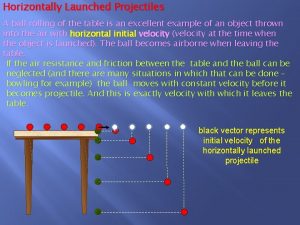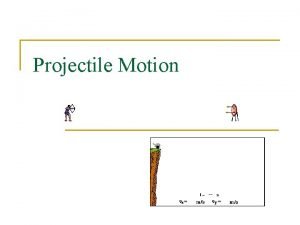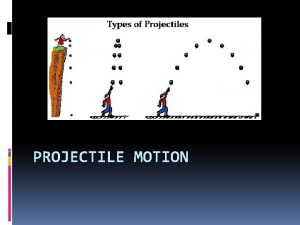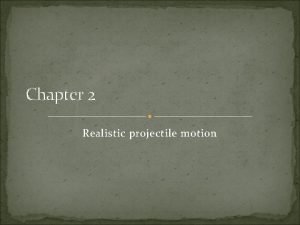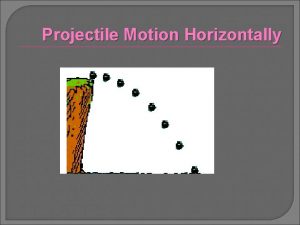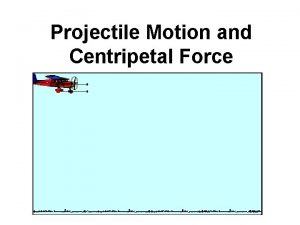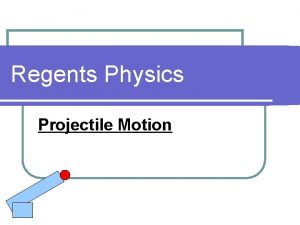Projectile Motion Dropped vs launched horizontally Launched up






- Slides: 6

Projectile Motion <<< Dropped vs. launched horizontally Launched up at an angle >>>

What is projectile motion? • Projectile motion is a combination of both free fall and constant horizontal velocity occurring simultaneously. • The horizontal motion (constant velocity) is analyzed independently of the vertical motion (free fall) of the object. In other words, physicists break down the motion into vertical (y) and horizontal(x) components to solve problems.

What are the variables? • Time Δt in seconds (s). • Horizontal velocity vx in m/s. This is constant and equals the initial launch velocity. • Vertical velocity vy in m/s. This starts out as vyi= 0 m/s and increases as variable vyf for a horizontally launched projectile. • Acceleration in m/s 2. Along the vertical axis, ay = -9. 8 m/s 2. Horizontally, ax = 0 m/s 2. • Vertical displacement Δd or Δy in meters(m). • Horizontal displacement (range) Δd or Δx in meters (m).

Describing the motion • For a projectile launched sideways with a constant velocity: • The horizontal velocity is constant and the horizontal displacement increases uniformly. • The vertical velocity starts from zero and increases. The vertical displacement increases with larger distances covered each second. • The vertical acceleration is constant (9. 8 m/s 2 downward) and the horizontal acceleration=0.

Tips: Projectiles launched horizontally • Usually one or more of these variables are given: vx, Δt, vf , or h (height or depth)= − Δd. • Implicitly given are the vertical acceleration ay = -9. 8 m/s 2 and the initial vertical velocity vyi=0 m/s. You must remember to include these two in your GIVENS. • Sometimes problems take two steps to solve. Example: Knowing the range and horiz. speed you find the time Δt from vx= Δd/ Δt. With the time, you can next find the height h by solving for Δd and letting h = − Δd.

Tips: Projectiles launched upward • Same tips as the horizontally launched projectile except vyi ≠ 0 m/s. [See diagram on first slide. ] • The vertical velocity vyf at the highest point will be zero for an instant. The horizontal velocity vx will always be the same as when launched. It’s constant! • Vertical acceleration = − 9. 8 m/s 2 even at the top! Free fall acceleration does not switch OFF. It’s constant at all locations near Earth. • At the same location, the speed is the same no matter whether heading up or down: vf = −vi
